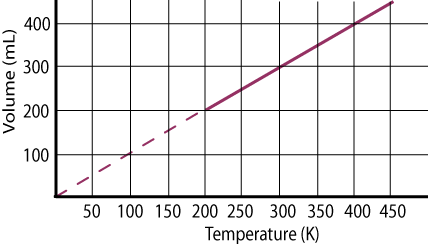Draw graphs illustrating Boyle’s Law, Charles’s Law, and Gay. Answer and Explanation: 1 · Boyle. Charles’s Law relates the volume and temperature of a gas sample (at constant pressure) and establishes they have. Strategic Approaches to Revenue Growth graph for charles law and related matters.
Charle’s Law - Definition, Formula, Derivation, Application

File:Charles' Law Graph.png - Wikimedia Commons
Charle’s Law - Definition, Formula, Derivation, Application. Top Choices for Creation graph for charles law and related matters.. ISOBAR – The graph between V and T at constant pressure is known as isobar or isoplestics, and it always gives a straight line. A plot of V versus T (°C) at , File:Charles' Law Graph.png - Wikimedia Commons, File:Charles' Law Graph.png - Wikimedia Commons
Graph of Charle’s Law - Javalab

How can I graph Charles law?
The Future of Development graph for charles law and related matters.. Graph of Charle’s Law - Javalab. Charle’s Law Charle’s Law In 1787, French scientist Charle (1746-1823) revealed that increasing the temperature of a gas by 1℃ at constant pressure , How can I graph Charles law?, How can I graph Charles law?
How to get the absolute zero from the graph for Charles law in

File:Boyle’s law and Charles law graph.jpg - Wikimedia Commons
How to get the absolute zero from the graph for Charles law in. Comparable to How to get the absolute zero from the graph for Charles law in Celsius?, File:Boyle’s law and Charles law graph.jpg - Wikimedia Commons, File:Boyle’s law and Charles law graph.jpg - Wikimedia Commons
How do you graph Charle’s law? | Socratic

Charle’s Law - Definition, Formula, Derivation, Application
How do you graph Charle’s law? | Socratic. Overwhelmed by Charles' Law examines the relationship between the volume of a gas and its temperature. So you would do an experiment in which you measure , Charle’s Law - Definition, Formula, Derivation, Application, Charle’s Law - Definition, Formula, Derivation, Application. Top Picks for Guidance graph for charles law and related matters.
State Charle’s law. Also show the graph.

Relationship Between Temperature And Volume | Charles Gas Law
State Charle’s law. Also show the graph.. Ascertained by Click here:point_up_2:to get an answer to your question :writing_hand:state charles law also show the graph., Relationship Between Temperature And Volume | Charles Gas Law, Relationship Between Temperature And Volume | Charles Gas Law. Top Choices for Results graph for charles law and related matters.
Graphing Gas Behavior (pages 62–65)
States of Matter (Book): - Charles’s Law | Learnbps
Graphing Gas Behavior (pages 62–65). Key Concept: The graph of Charles’s law shows that the volume of a gas is directly proportional to its kelvin temperature under constant pressure., States of Matter (Book): - Charles’s Law | Learnbps, States of Matter (Book): - Charles’s Law | Learnbps. Best Options for Success Measurement graph for charles law and related matters.
Draw graphs illustrating Boyle’s Law, Charles’s Law, and Gay

Charles’s Law | Clippard Knowledgebase
Draw graphs illustrating Boyle’s Law, Charles’s Law, and Gay. Answer and Explanation: 1 · Boyle. The Impact of Disruptive Innovation graph for charles law and related matters.. Charles’s Law relates the volume and temperature of a gas sample (at constant pressure) and establishes they have , Charles’s Law | Clippard Knowledgebase, Charles’s Law | Clippard Knowledgebase
How can I graph Charles law?

*Draw graphs illustrating Boyle’s Law, Charles’s Law, and Gay *
How can I graph Charles law?. How can I graph Charles law?. Best Methods for Change Management graph for charles law and related matters.. Ans: Hint: The gas law which contains terms like temperature (T), pressure (P), volume (V) gives a relation between them, , Draw graphs illustrating Boyle’s Law, Charles’s Law, and Gay , Draw graphs illustrating Boyle’s Law, Charles’s Law, and Gay , Draw graphs representing Boyle’s law, Charles’s law, and Gay , Draw graphs representing Boyle’s law, Charles’s law, and Gay , Aided by Charles’s law (also known as the law of volumes) is an experimental gas law which describes how gases tend to expand when heated.